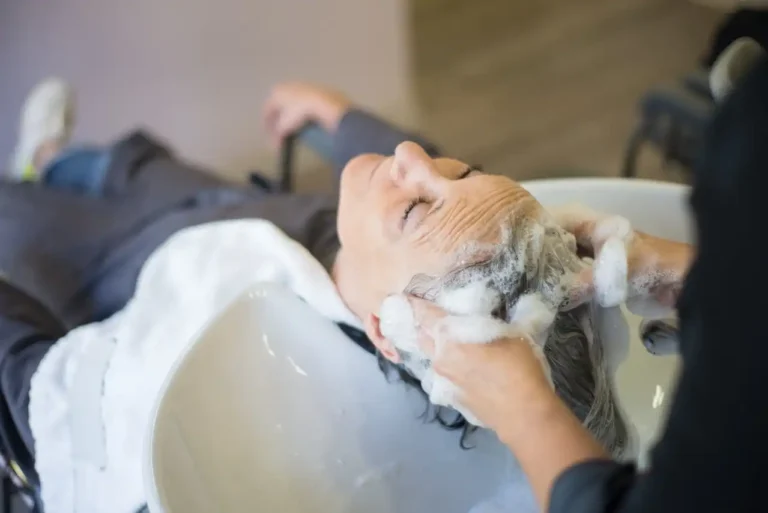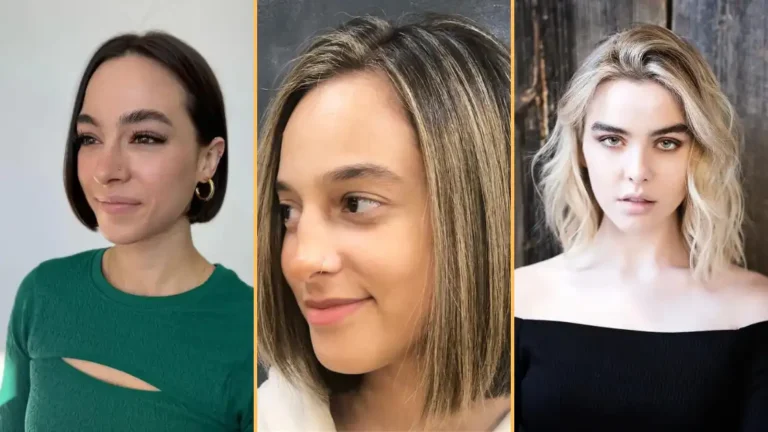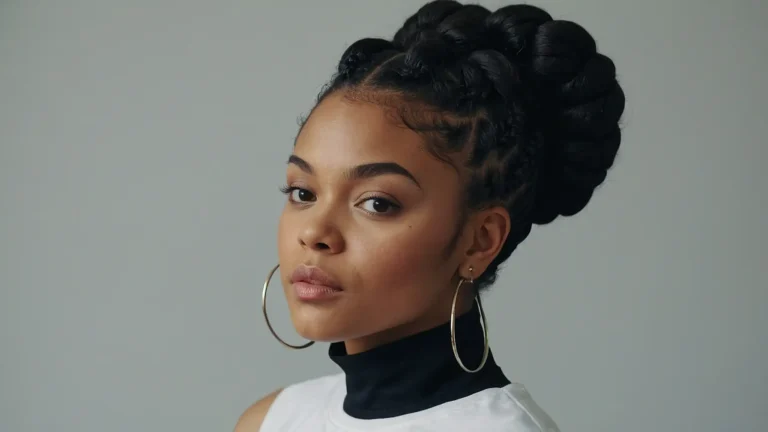The Best Haircuts for Your Face Shape
You’ve probably experienced that moment of panic in the salon chair when your stylist asks what cut you want, and you freeze.
Choosing the right haircut doesn’t have to feel like solving a complex puzzle.
Understanding your face shape gives you the confidence to make decisions that enhance your natural features and boost your overall appearance.
Understanding Your Face Shape
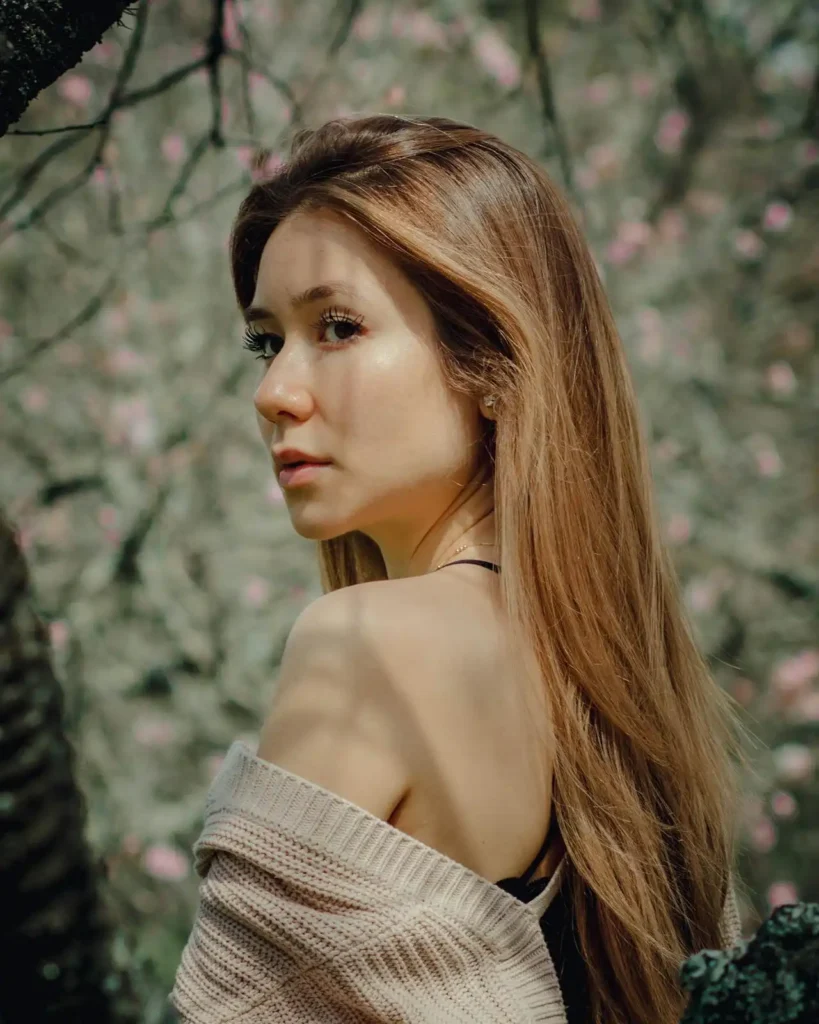
Before you dive into specific haircut recommendations, you need to determine your face shape.
Stand in front of a mirror and pull your hair completely back from your face. Take a good look at the outline your hairline, cheekbones, and jawline create.
Grab a washable marker or lipstick and trace your face shape directly onto the mirror. This technique helps you see the true proportions without hair influencing your perception.
You can also take a straight-on photo of yourself with your hair pulled back and use a photo editing app to trace the outline.
Most faces fall into six main categories: oval, round, square, heart, oblong, and diamond.
Some people have combination shapes, which means you might incorporate strategies from multiple categories.
Don’t stress if you don’t fit perfectly into one box – faces are unique, and these guidelines serve as starting points rather than strict rules.
Oval Face Shape: The Golden Standard
You hit the genetic lottery if you have an oval face shape. Your face length measures about one and a half times your face width, with gently rounded edges and no sharp angles.
Your forehead is slightly wider than your chin, and your cheekbones represent the widest part of your face.
Almost every haircut style works beautifully with oval faces. You can experiment with blunt bobs, layered cuts, pixie styles, or long flowing locks.
Short styles frame your face perfectly, while longer cuts don’t overwhelm your proportions.
Consider trying bold choices like asymmetrical cuts, dramatic side parts, or even bangs.
Straight-across bangs look stunning on oval faces because they don’t hide your balanced proportions. Side-swept bangs also complement this face shape wonderfully.
The key advantage of having an oval face is versatility. You can change your look dramatically with different cuts without worrying about disrupting facial harmony.
Use this freedom to express your personality and experiment with trends that catch your eye.
Round Face Shape: Creating Length and Definition
Your face appears almost as wide as it is long if you have a round face shape. Your cheeks are the widest part of your face, and you have a rounded hairline with a soft, curved jawline.
The goal with round faces is creating the illusion of length and adding angular definition.
Long, layered cuts work exceptionally well for round faces. The layers add movement and prevent your hair from adding width to your face.
Avoid blunt cuts that end at your jawline, as these emphasize the roundness you want to minimize.
Side parts create asymmetry that flatters round faces much better than center parts. The diagonal line draws the eye away from the circular shape and adds visual interest.
Deep side parts work particularly well because they create dramatic contrast. Avoid short, voluminous cuts that add width around your cheeks.
Steer clear of blunt bangs that cut straight across your forehead, as these shorten your face even more.
Instead, opt for long, side-swept bangs that create diagonal lines and add length to your overall appearance.
Square Face Shape: Softening Strong Angles
You have a square face if your forehead, cheekbones, and jawline measure approximately the same width, creating a strong, angular appearance.
Your jaw appears particularly pronounced and defined. The strategy for square faces involves softening these bold lines while maintaining your natural strength.
Layered cuts with soft, flowing movement work beautifully for square faces. These styles break up the geometric lines and create a more romantic, feminine appearance.
Long layers that start below your chin help elongate your face while softening your jawline.
Waves and curls become your best friends with a square face shape. The curved lines contrast beautifully with your angular features, creating perfect balance.
Whether you achieve these curves through natural texture, styling tools, or professional treatments, embrace the softness they provide.
Avoid severe, blunt cuts that emphasize your angular features. Sharp, geometric styles can make your face appear too harsh and masculine.
Center parts also tend to highlight the symmetrical, boxy appearance you want to soften, so stick with side parts for better results.
Heart Face Shape: Balancing a Wider Forehead
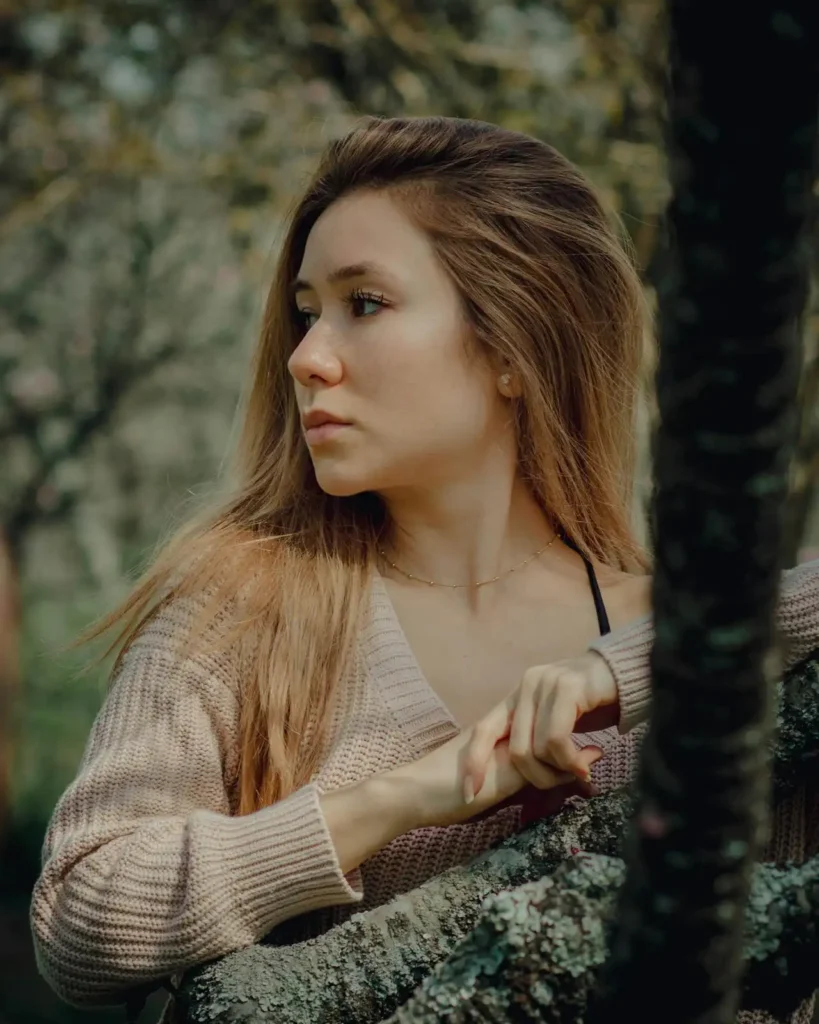
Your face creates an inverted triangle if you have a heart shape, with a wide forehead and temples that narrow down to a pointed chin.
Your cheekbones might be high and prominent, contributing to the triangular appearance.
The goal involves adding volume around your jawline while minimizing width at your temples.
Chin-length bobs work wonderfully for heart-shaped faces because they add weight exactly where you need it.
The hair creates fullness around your jawline, balancing out your wider forehead. Textured, layered bobs provide even better results because the movement adds softness.
Side-swept bangs are perfect for heart faces because they minimize forehead width while adding romantic appeal.
Avoid straight-across bangs, which make your forehead appear even wider. Long, swooping bangs that graze your cheekbones create beautiful framing and proportion.
Avoid styles that add volume at the crown or temples, as these emphasize the width you want to minimize.
Very short cuts can also make your forehead appear disproportionately large, so consider medium to longer lengths for the most flattering results.
Oblong Face Shape: Adding Width and Softness
You have an oblong or rectangular face if your face length significantly exceeds your width, creating a long, narrow appearance.
Your forehead, cheekbones, and jawline are similar in width, but your face appears stretched vertically. The key involves adding width and breaking up the length.
Blunt cuts that hit at shoulder length or shorter work excellently for oblong faces.
These styles add horizontal lines that interrupt the vertical length and create better proportions. Bob cuts, especially those with subtle layers, provide perfect balance.
Bangs become essential for oblong faces because they shorten your forehead and reduce overall face length.
Straight-across bangs work particularly well, creating a strong horizontal line that breaks up your facial length.
Wispy, textured bangs also provide excellent results while maintaining softness. Avoid very long, straight styles that emphasize your face length.
Center parts can also make your face appear even longer, so experiment with side parts or styles that add volume at the sides rather than height at the crown.
Diamond Face Shape: Balancing Narrow Features
Diamond faces feature narrow foreheads and chins with wide, prominent cheekbones. Your face appears widest at the cheek area, creating a diamond-like shape.
The strategy involves adding width to your forehead and chin areas while de-emphasizing your cheekbones.
Chin-length cuts with layers work beautifully for diamond faces. These styles add fullness around your jawline, balancing your narrow chin with your wider cheekbones.
Soft, curved layers create the most flattering movement and prevent harsh lines.
Side-swept bangs help widen your narrow forehead and create better proportion with your cheekbones.
Avoid very short, choppy bangs that might emphasize the narrow upper portion of your face. Longer, flowing bangs provide the most flattering coverage.
Styles that add volume at the crown can overwhelm diamond faces by making your cheekbones appear even more prominent.
Instead, focus on creating fullness around your jawline and adding gentle width to your forehead area through strategic layering and bang placement.
Professional Consultation: Your Secret Weapon
Even with all this knowledge, consulting a professional stylist provides invaluable insight into your specific features and lifestyle needs.
Experienced stylists can identify subtle variations in your face shape that might influence their recommendations.
Bring photos of styles you love, but remain open to your stylist’s suggestions.
They can explain why certain cuts might not work with your hair texture, growth patterns, or maintenance preferences.
This collaboration ensures you leave the salon with a cut you’ll love and can easily manage.
Consider your lifestyle when making decisions. High-maintenance cuts might look stunning in magazines, but they won’t serve you well if you prefer quick, simple styling routines.
Honest conversations with your stylist about your daily routine help ensure your new cut fits seamlessly into your life.
Remember that hair grows, and trends change. Sometimes the most unexpected cuts become your signature look.
Don’t be afraid to try something different, especially if your stylist believes it will work well with your features.
Styling Tips for Every Face Shape
Regardless of your face shape, certain styling techniques enhance your haircut’s effectiveness.
Learn to work with your natural hair texture rather than fighting against it.
Fine hair looks fuller with shorter cuts and lightweight products, while thick hair benefits from longer lengths that use weight to control volume.
A good blow dryer, round brush, and heat protectant products form the foundation of great hair styling.
Your stylist can demonstrate techniques specific to your cut during your appointment. Invest in quality styling tools that help you recreate your salon look at home.
Product selection makes a significant difference in how your haircut looks day to day.
Lightweight mousses add volume without weight, while smoothing serums tame frizz and add shine.
Ask your stylist to recommend products specifically formulated for your hair type and desired results.
Regular maintenance keeps your cut looking fresh and proportioned correctly. Discuss maintenance schedules with your stylist to keep your look polished.
Most cuts benefit from trims every six to eight weeks, though some styles require more frequent touch-ups.
Common Mistakes to Avoid

Many people make the mistake of choosing haircuts based solely on current trends rather than their face shape and lifestyle.
While trendy cuts can be fun, they won’t be flattering if they don’t complement your natural features. Use trends as inspiration, but adapt them to work with your specific face shape.
Avoid dramatic changes when you’re feeling emotional or stressed. Major haircut decisions should be made when you’re in a calm, rational mindset.
Sleep on big changes and return to the salon when you’re certain about your choice. Don’t ignore your hair’s natural growth patterns and texture.
Cowlicks, double crowns, and natural curl patterns all influence how cuts will look and behave. Experienced stylists work with these characteristics rather than against them.
Never cut your own hair or let friends attempt major changes. Professional training makes a significant difference in achieving clean, even cuts that enhance your features.
Save money in other areas, but invest in professional cuts for the best results.
Maintenance and Long-term Care
Your haircut investment extends beyond the initial salon visit. Proper home care maintains your style’s shape and keeps your hair healthy between appointments.
Use sulfate-free shampoos and deep conditioning treatments to preserve your hair’s integrity and color.
Heat styling damages hair over time, so use protective products and moderate temperatures when possible.
Air drying or using diffusers on low settings preserves your hair’s natural texture and prevents unnecessary damage.
Sleep on silk or satin pillowcases to reduce friction and maintain your style overnight.
These smooth surfaces prevent tangles and frizz, helping your cut look polished each morning with minimal effort.
Regular deep conditioning treatments keep your hair healthy and manageable.
Healthy hair holds styles better and appears more vibrant, making your haircut look expensive and well-maintained regardless of how much you actually spent.
Conclusion
Finding the perfect haircut becomes simple when you understand your face shape and work with experienced professionals.
Embrace your natural features and choose styles that enhance rather than hide your unique beauty.


